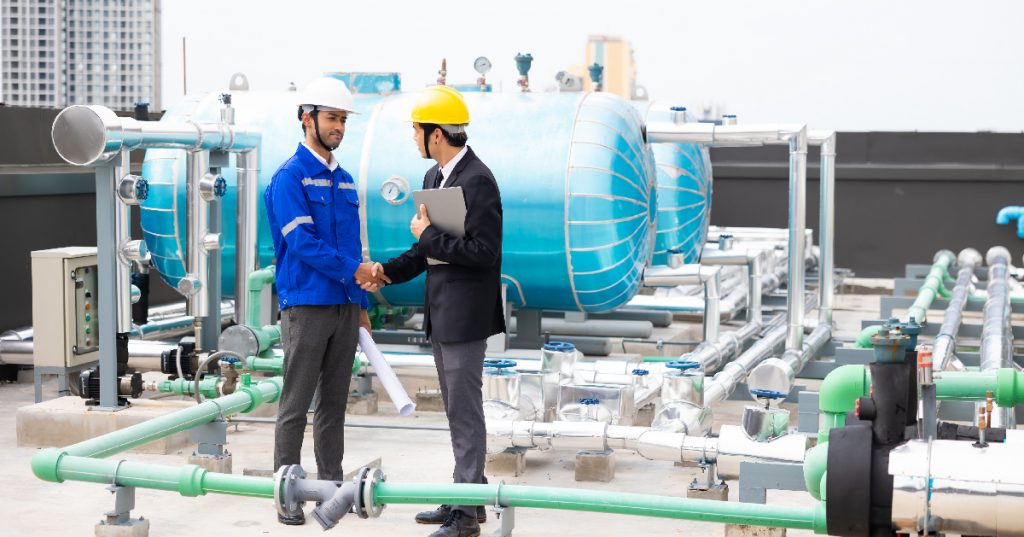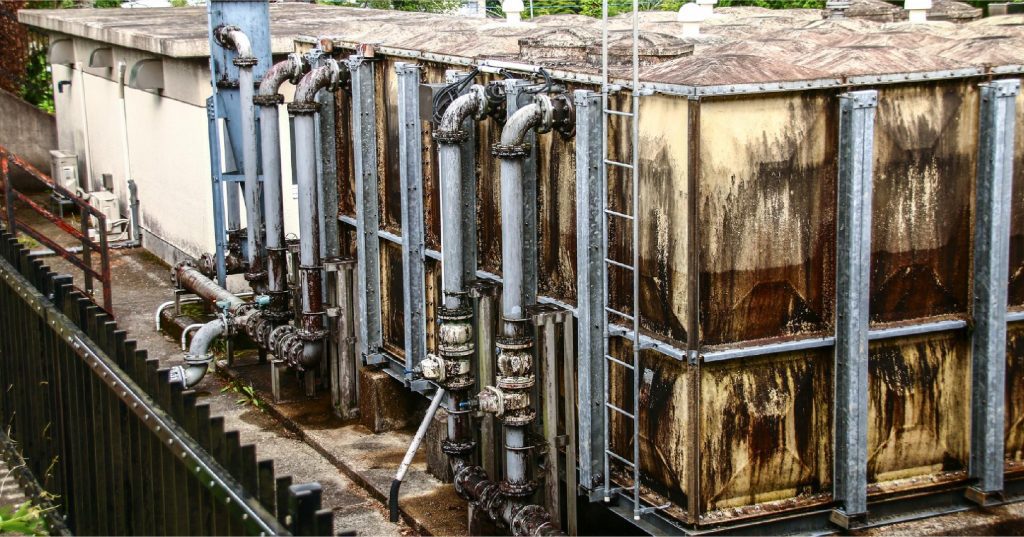Water is one of the most essential resources in our daily lives. From household use to industrial processes, access to clean and safe water is a non-negotiable need. In the United States, the role of water treatment plants in delivering purified water to communities and businesses cannot be overstated. However, simply installing a plant is not enough. To ensure consistent performance, safety, and compliance, regular water treatment plant maintenance is critical.
This comprehensive guide explores the key elements of water treatment maintenance, offering valuable insights for plant operators, facility managers, and utility providers across the country.
Why is Water Treatment Plant Maintenance Important?
Water treatment plants handle complex processes involving physical, chemical, and biological systems. Over time, machinery can wear out, filters can clog, sensors may drift, and microbial contamination may occur. Without a robust maintenance schedule, these issues can compromise water quality, result in system failures, and lead to costly repairs.
Proper water treatment plant maintenance ensures:
- Compliance with environmental regulations
- Extended equipment lifespan
- Reduced operational downtime
- Improved energy efficiency
- Enhanced safety for operators and end-users
Types of Maintenance for Water Treatment Plants
1. Preventive Maintenance: This involves routine inspections and services carried out at scheduled intervals. Preventive water treatment maintenance helps identify issues before they escalate and ensures the plant runs smoothly.
Common tasks include:
- Checking and calibrating instrumentation
- Cleaning tanks, pipes, and filters
- Replacing worn-out seals, bearings, and valves
- Lubricating moving parts
- Inspecting membranes in reverse osmosis (RO) systems
2. Corrective Maintenance: Corrective maintenance addresses issues that have already caused disruptions or inefficiencies. While not ideal, it’s sometimes necessary when equipment unexpectedly fails or shows signs of serious malfunction.
Examples include:
- Fixing pump failures
- Replacing broken flow meters
- Repairing electrical control systems
3. Predictive Maintenance: Thanks to modern technologies such as IoT sensors and AI-based analytics, predictive maintenance is becoming more common in the water treatment industry. It allows plant managers to forecast potential breakdowns based on real-time data and historical trends.
Key Areas to Focus On in Water Plant Maintenance
To ensure an effective maintenance program, it’s essential to focus on specific areas that often experience wear or require close monitoring:
- Pumps and Motors: The heart of most water treatment systems. Regular vibration checks and motor winding analysis are crucial.
- Filters and Media Beds: Replace or regenerate media in softeners, carbon filters, or sand beds as needed.
- Chemical Feed Systems: Ensure accurate dosing to avoid over- or under-treatment, which can affect water quality and safety.
- Instrumentation and Controls: Regularly test sensors and PLCs to maintain automation accuracy.
- Disinfection Equipment: UV lamps, chlorinators, and ozone generators must be maintained to ensure proper microbial control.
Common Challenges in Water Treatment Maintenance
While the importance of water treatment system maintenance is clear, several challenges often hinder its consistent implementation:
- Budget constraints that delay essential servicing
- Limited access to skilled maintenance personnel
- Aging infrastructure in older facilities
- Lack of real-time monitoring tools
- Inconsistent documentation and maintenance tracking
Creating a Maintenance Plan
A structured maintenance plan ensures nothing is overlooked. Here’s a simple framework:
- Asset Inventory: List all critical equipment and components in the plant.
- Maintenance Schedule: Define routine and seasonal service intervals.
- Task Assignments: Designate roles and responsibilities to qualified staff.
- Record Keeping: Maintain logs for inspections, repairs, and part replacements.
- Review and Optimize: Periodically evaluate the plan and adjust based on performance data and operational changes.
The Role of Technology in Modern Water Treatment Maintenance
Today’s advanced treatment plants are integrating digital solutions for more efficient maintenance. SCADA systems, remote sensors, and AI-powered diagnostic tools allow real-time monitoring and alerts, helping teams respond faster to anomalies.
Mobile apps for technicians, cloud-based data platforms, and automated reporting tools also make it easier to manage water plant maintenance remotely and effectively.
Ion Exchange: Innovative Treatment Methods to Purify Your Water
Ion Exchange, a leading company in the water treatment industry, offers innovative and sustainable solutions to address the challenges of modern water treatment methods. By leveraging advanced technologies, Ion Exchange provides efficient, cost-effective, and environmentally friendly water treatment solutions.
For more than six decades, Ion Exchange has been providing a complete range of products and solutions for the water treatment needs of industries, institutions, municipalities, homes, and communities (both urban and rural) globally. Our water treatment methods include a wide range of customized and pre-engineered water treatment plants for clarification, filtration, disinfection, process water treatment, and post-treatment to polish treated water, ensuring it meets critical quality requirements for various uses.
Raw water treatment is a critical aspect of ensuring clean and safe water through various water treatment methods. Our efficient raw water treatment systems and processes effectively address variations in turbidity, flow, and chemical volumes, eliminating suspended and colloidal solids, silica, iron, bacteria, and hardness to meet the required feed water quality. These comprehensive water treatment methods include aeration, coagulation and flocculation, clarification, filtration, and disinfection, each playing a vital role in enhancing water quality and making it safe for consumption and industrial use.
Our extensive range of standard packaged, industrial, and custom-built water treatment plants provides effective water solutions for boiler water treatment, cooling water treatment, and other process water applications. Utilizing advanced water treatment methods, we implement high-flow demineralization with a special regeneration technique for the treatment of turbine and process condensate in the thermal, nuclear, and process industries. Our comprehensive product lineup includes softeners, demineralization, nanofiltration, reverse osmosis, ultrafiltration, electro-deionization (EDI), and electrodialysis reversal (EDR). These state-of-the-art water treatment methods ensure optimal performance and reliability for various industrial needs.
Post-treatment processes are essential to condition treated water for its specific end use, and there are various types of post-treatment options depending on the plant conditions. Among the different water treatment methods, Ion Exchange offers an extensive range of post-treatment solutions tailored to meet your specific needs. These solutions include condensate polishing units, deaerators, sidestream filters, and an array of boiler and cooling water treatment chemicals. Products like condensate polishing units, deaerators, strippers, scrubbers, and specialized chemicals (O2, NH4, H2S, CO2, SOx, NOx, and VOCs) play a critical role in this stage. Additionally, sidestream filters, boiler water chemicals, cooling water chemicals, and chemical dosing systems ensure the water meets the required quality standards for its intended use, highlighting the importance of comprehensive water treatment methods.
Ion Exchange is the pioneer of potable water treatment solutions in India under our flagship brand, ZeroB. Our drinking water treatment methods offer a range of purifiers that utilize advanced technologies such as reverse osmosis, ultrafiltration membrane technologies, electro-chlorination, ozonation, and resins. These methods effectively purify both surface and groundwater, making it suitable for safe and healthy drinking. By combining these innovative water treatment methods, we ensure the highest standards of water quality for households and communities across the country.
Conclusion
Water treatment plant maintenance is not just about keeping systems operational; it’s about ensuring the health and well-being of the communities served. Regular and well-planned water treatment maintenance reduces risk, improves efficiency, and guarantees that water quality standards are met consistently. Whether you manage a municipal plant, an industrial facility, or a commercial complex, investing in proper water treatment system maintenance is key to sustainable operations.





